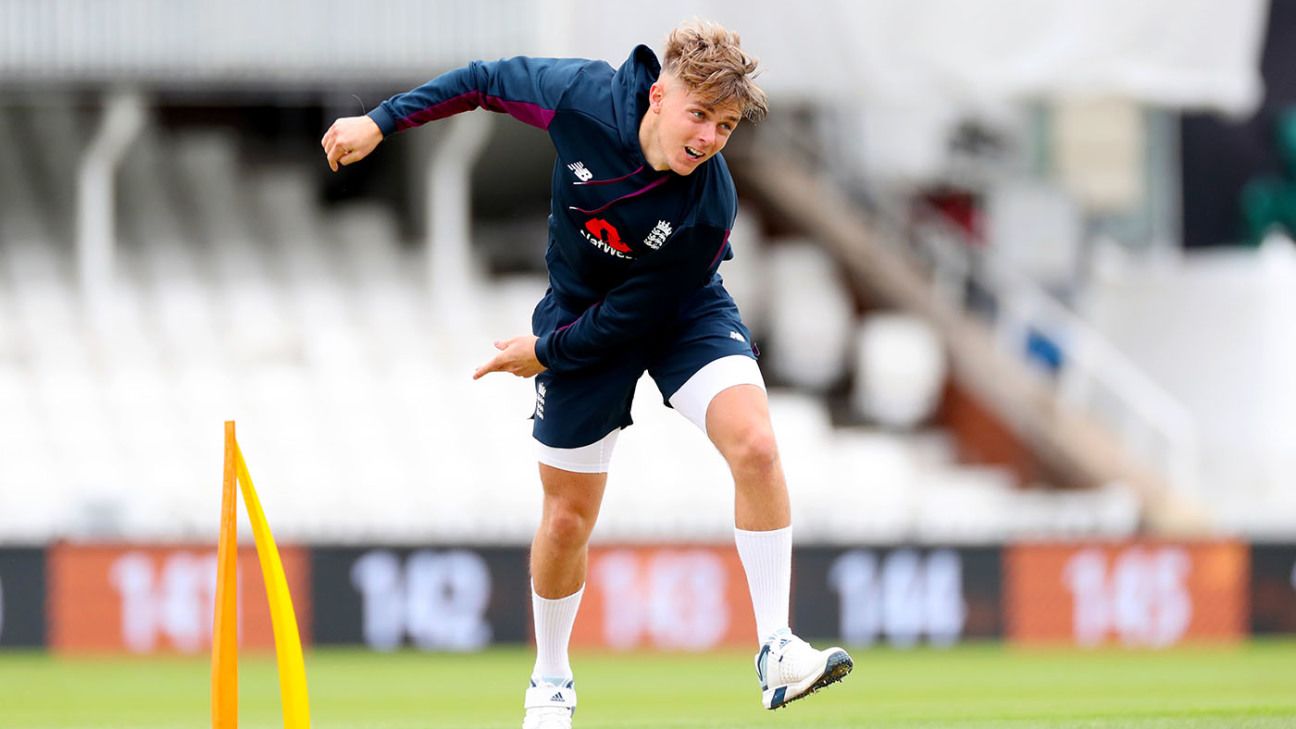Fast bowlers need to build up their workloads “as sensibly as possible” in order to help mitigate against increased injury risk as they look to return from a prolonged period of rest, according to Surrey’s lead physiotherapist.
Plans are being drawn up around the world for players to return to training after an enforced break from the game, and Alex Tysoe told ESPNcricinfo that building up progressively will be vital for seamers in order to avoid the “undesirable” injury scenario seen in Germany’s Bundesliga.
A report by sports scientist Joel Mason found that injury rates shot up from 0.27 per game to 0.88 in the first weekend of top-flight football in Germany for two months, with soft-tissue injuries particularly prevalent as teams rushed back to the pitch. Tysoe said that fast bowlers needed to find a sensible balance as they prepare to return to cricket.
ALSO READ: ECB handed discretion over move to stage two training by government
“There’s a lot about elite sport and the Covid situation which is not ideal, and we’re possibly seeing the effects of a sustained lockdown on football” he said. “You’ll have seen in the Bundesliga, there were a reported six soft-tissue injuries in the first eight games, which is an unusually high number for that league and sport.
“Bowling is a lot more difficult to facilitate during this period because players haven’t been able to use their local clubs or outdoor facilities. We know from a research point of view that one of the ways to mitigate the risk of a sharp rise in workload is to try and improve the individual’s relative strength, and then all you can do is be sensible when you get back into things: increase people’s bowling workloads as fast as possible but as sensibly as possible too.”
Tysoe is a co-author of a recent paper published in the Journal of Science and Medicine in Sport which examined bowling loads and injuries for 49 fast bowlers at six different counties, and some of the conclusions drawn are relevant to the ongoing crisis.
The study was primarily methodological, exploring the ability of ‘differential loads’ to predict injury risk compared to the widely-used ‘acute-chronic workload ratio’ method, but also demonstrated that large week-to-week increases in bowling loads and bowling after a long period without are associated with the possibility of heightened injury risks.
“A simple analogy is that if you’re flying a plane, you have to consider the throttle, the level of the nose, and keeping your wings level on the horizon,” Tysoe said. “If you can keep all those within certain ranges, then your plane is much more likely to have a nice smooth journey; if you move the nose up and down, the wings left and right, and you’re messing around with the throttle, it’ll be a bumpy ride. It’s about getting up to cruising height nice and smoothly and staying there.
“It’s similar in the case of fast bowlers: it’s about making sure that they’re not doing too much, too soon, relative to the last 42 days, that on a week-to-week basis they’re not adding to what they’re doing too quickly, and that if they do have a break it’s not for too long. What we want now is to have a nice smooth take-off, to get back to that analogy, where we’re getting bowlers to take off reasonably quickly while doing it as safely as possible.”
Tysoe has been at The Oval in the past week, overseeing Sam Curran and Amar Virdi‘s first few sessions back bowling, and said that things had gone “really smoothly”. Eighteen England bowlers are now back in individual training, with a seven-week run-in between their return and the planned first West Indies Test on July 8.
The ECB’s performance director Mo Bobat has previously said that the schedule for this summer is likely to be “pretty brutal”, and that it may be necessary to rotate fast bowlers in order to reduce injury risks. Seamers have been bowling around six overs each per session and will gradually build up over the coming weeks.
“A lot of work went into drawing up the protocols with the ECB, and then implementing all of the logistics,” Tyose said. “The important thing is that the players are safe, and that they can still have some quality training – otherwise there’s no point doing it. The ECB have been brilliant throughout the process, and we’re looking forward to seeing how things progress.”
ALSO READ: How are cricketers keeping fit in lockdown?
Surrey are one of two counties, along with Lancashire, not to have furloughed players during the lockdown, meaning the squad have been checked in on regularly. The club have run weekly Zoom yoga sessions to help increase the squad’s mobility, and Tysoe is hopeful that if a county season is possible later in the summer, players “are not going to take too long to turn around at all”.
“We’re satisfied that they’re in as good a position as they could be at the moment. When we do get the green light to get back in and know when fixtures are, we’re in a position where we’re comfortable we can get them turned around in a relatively quick period of time.
“For the fast bowlers, they can’t bowl in the nets or outside but we can mimic those movements with medicine balls to make sure soft tissues are used to repeatedly producing those powerful, dynamic movements.
“One of the things we can’t do is influence the bone density of the spine. Pete Alway, who did a PhD with the ECB, did his research on spinal density of fast bowlers, and we now know that there’s nothing that can strengthen the spine for bowling better than bowling itself. You lose spine density pretty quickly when you stop bowling, and predictably it can take you longer to build that up: we need to be mindful of building them back up sensibly.”
